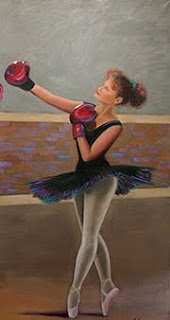
In a streetfight you must be able to move smoothly and quickly without hesitation on your part.
You must be explosive with your punches and put your weight behind each strike for maximum power output. You don’t want to be spending all night kicking someone’s ass; you want to get it done as quickly as possible.
So the worst thing you can do to hinder your survival in a streetfight is fight from a “Dead Stance”.
A streetfight can be very chaotic, dangerous and unpredictable, so when you need to move, you need to do it instantly.
Now being explosive and spring loaded doesn’t mean that you should be dancing or bouncing around your adversary, never do that in a streetfight unless you have a death wish.
· Squeeze your inner thighs slightly. These are the muscles that help drive power into your punch.
· Sit on your punch. Bend your knees slightly to give your legs more spring and lower your center of gravity.
· Squeeze your butt cheeks and anal sphincter slightly. This will engage your posterior chain of muscles which will help drive your body forward.
· Grab the ground with your feet. Paw the ground with your toes to help drive the body explosively.
· Push off with the big toe of your foot. This powerful muscle will help get you moving.
· Drive from the hips. Explode from your center to bring your whole body into the movement.
· Raise the rear foot slightly off the ground. This will help to propel you forward more quickly. Just make sure you push off the ground as you move.
Use this information to load your stance and become a more explosive fighter.
In closing I’ve given you enough information to resurrect your dead stance and make it more dynamic and explosive.
Daniel Sambrano
